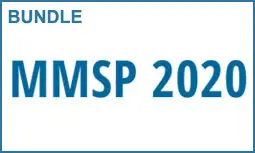-
Members: FreeSPS
IEEE Members: $11.00
Non-members: $15.00Length: 09:11
23 Sep 2020
Equirectangular projection is commonly used to map 360° captures into planar representation, so that existent processing methods can be directly applied to such content. Such format introduces stitching distortions that could impact the efficiency of further processing such as camera pose estimation, 3D point localization and depth estimation. Indeed, even if some algorithms, mainly feature descriptors, tend to remap the projected images into a sphere, important radial distortions remain existent in the processed data. In this paper, we propose to adapt the spherical model to the geometry of the 360° fish-eye camera, and avoid the stitching process. We consider the angular coordinates of feature points on the sphere for evaluation. We assess the precision of different operations such as camera rotation angle estimation and 3D point depth calculation on spherical camera images. Experimental results show that the proposed fish-eye adapted sphere mapping allows more stability in angle estimation, as well as in 3D point localization, compared to the one on projected and stitched contents.



